Manuscripts and Related Writings of the Pioneers of the Relativity Revolution
The seed collections comprise sources from various archives which are related to the relativity revolution of the early twentieth century. More generally, this site will provide an open platform for collecting sources on the history of modern physics. You are invited to submit sources, which are relevant for research on the history of modern physics. We will ensure that the sources will be archived. The long-term stability of the links is guaranteed.
 Albert Einstein's Articles in "Annalen der Physik"
Albert Einstein's Articles in "Annalen der Physik"
 Archives Henri Poincaré
Archives Henri Poincaré
 Collection of Sources on History of Quantum Physics
Collection of Sources on History of Quantum Physics
 David Hilbert, Die Grundlagen der Physik
David Hilbert, Die Grundlagen der Physik
 Interviews with Modern Physicists
Interviews with Modern Physicists
 Lecture Notes taken by Walter Zabel
Lecture Notes taken by Walter Zabel
Walter Carl Ferdinand Zabel, born 1892 in Bromberg/Posen, studied from summer 1911 to summer 1912 in Breslau and from winter 1912 to summer 1914 in Göttingen. From 1914 to 1919 he joined the military service, but must have had time to hear a lecture of Einstein in the winter 1917/18 at the university of Berlin without being registered. From 1919 to 1920 he finished his studies in Halle and worked afterwards until his retirement in 1957 as a teacher at a gymnasium in Berlin-Tempelhof. He died in 1968 leaving behind two carefully written volumes with lecture notes.
The first volume contains essentially a comprehensive lecture of David Hilbert on the foundations of mathematics. As an appendix to this lecture, Zabel copied a publication of Minkowski's famous 1908 lecture on space and time. The second volume begins with another lecture of Hilbert, a lecture on analytical mechanics at the university of Göttingen in winter 1913/14. The volume continues after the interruption of Zabel's studies with a lecture of Grammel on hydrodynamics at the university of Halle in summer 1919. The volumes ends with notes taken at Einstein's lecture on statistical mechanics at the university of Berlin in Winter 1917/18. In contrast to other lecture notes, these notes are written on bad quality paper and incompletely worked out, obviously as a consequence of the war. Zabel kept, however, stenographic notes of the parts missing at the end.
 Notebooks of Einstein and Minkowski in the Jewish National & University Library
Notebooks of Einstein and Minkowski in the Jewish National & University Library
 Scientific Philosophy and Modern Physics: Albert Einstein and Moritz Schlick
Scientific Philosophy and Modern Physics: Albert Einstein and Moritz Schlick
 Scientific Philosophy and Modern Physics: Hans Reichenbach and Moritz Schlick, Correspondence 1920-22
Scientific Philosophy and Modern Physics: Hans Reichenbach and Moritz Schlick, Correspondence 1920-22
 Scientific Philosophy and Modern Physics: Hans Reichenbach and Moritz Schlick, Correspondence 1923/24
Scientific Philosophy and Modern Physics: Hans Reichenbach and Moritz Schlick, Correspondence 1923/24
The extensive correspondence between Hans Reichenbach and Moritz Schlick is one of the most important sources of the origin and the development of the scientific philosophy in Europe in the first half of the 20th century. Both Schlick and Reichenbach were very much involved in the philosophical debates concerning the relativity and the quantum revolution. Most significantly, the correspondence deals with the concepts of space, time, natural law, probability and causality and its fundamental changes due to modern physics.
 Secondary Literature on Sources on Modern Physics
Secondary Literature on Sources on Modern Physics
 The Ernst Gehrcke Papers
The Ernst Gehrcke Papers
The Max Planck Institute for the History of Science has recently acquired what has been preserved of the Ernst Gehrcke Papers. Parts of these papers will be digitized and made accessible.
From 1902 until 1946, Gehrcke, an experimentalist and specialist in optics, was employed at the Physikalisch-Technische Reichsanstalt, and became director of the department of optics in 1926. Ernst Gehrcke is known as a fervent critic of Einstein and a leading figure among Einstein's German opponents. The Ernst Gehrcke Papers contain correspondence with the physicists Philipp Lenard, Stjepan Mohorovicic, Ludwig Glaser, Hermann Fricke, Johannes Stark, Otto Lummer and the philosophers Oskar Kraus, Melchior Palagyi, Leonore Frobenius-Kühn, and others; numerous offprints and booklets; some drafts and manuscripts by Gehrcke, for example, Über das Uhrenparadoxon in der Relativitätstheorie and Die erkenntnistheoretischen Grundlagen der verschiedenen physikalischen Relativitätstheorien, and all the parts which were rescued from the Gehrcke newspaper article collection.
 Albert Einstein - Chief Engineer of the Universe (virtual exhibition)
Albert Einstein - Chief Engineer of the Universe (virtual exhibition) top
top

